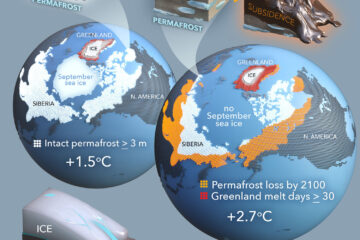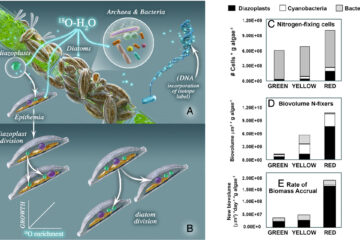Disentangling the role of photosynthesis and stomatal conductance on rising forest water-use efficiency
Forests remove about 30% of anthropogenic CO2 emissions through photosynthesis and return almost 40% of incident precipitation back to the atmosphere via transpiration. The trade-off between photosynthesis and transpiration through stomata, the water-use efficiency (WUE), is an important driver of plant evolution and ecosystem functioning, and has profound effects on climate. Using stable carbon and oxygen isotope ratios in tree rings, we found that WUE has increased by a magnitude consistent with estimates from atmospheric measurements and model predictions. Enhanced photosynthesis was widespread, while reductions in stomatal conductance were modest and restricted to moisture-limited forests. This result points to smaller reductions in transpiration in response to increasing atmospheric CO2, with important implications for forest–climate interactions, which remain to be explored.Multiple lines of evidence suggest that plant water-use efficiency (WUE)—the ratio of carbon assimilation to water loss—has increased in recent decades. Although rising atmospheric CO2 has been proposed as the principal cause, the underlying physiological mechanisms are still being debated, and implications for the global water cycle remain uncertain. Here, we addressed this gap using 30-y tree ring records of carbon and oxygen isotope measurements and basal area increment from 12 species in 8 North American mature temperate forests. Our goal was to separate the contributions of enhanced photosynthesis and reduced stomatal conductance to WUE trends and to assess consistency between multiple commonly used methods for estimating WUE. Our results show that tree ring-derived estimates of increases in WUE are consistent with estimates from atmospheric measurements and predictions based on an optimal balancing of carbon gains and water costs, but are lower than those based on ecosystem-scale flux observations. Although both physiological mechanisms contributed to rising WUE, enhanced photosynthesis was widespread, while reductions in stomatal conductance were modest and restricted to species that experienced moisture limitations. This finding challenges the hypothesis that rising WUE in forests is primarily the result of widespread, CO2-induced reductions in stomatal conductance.


